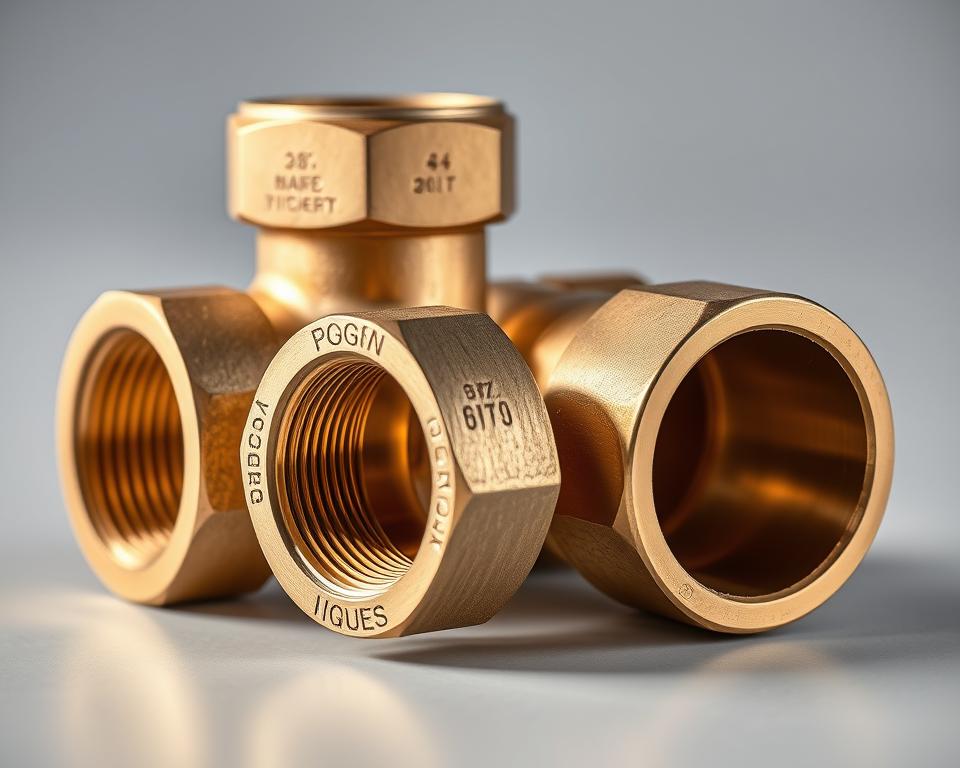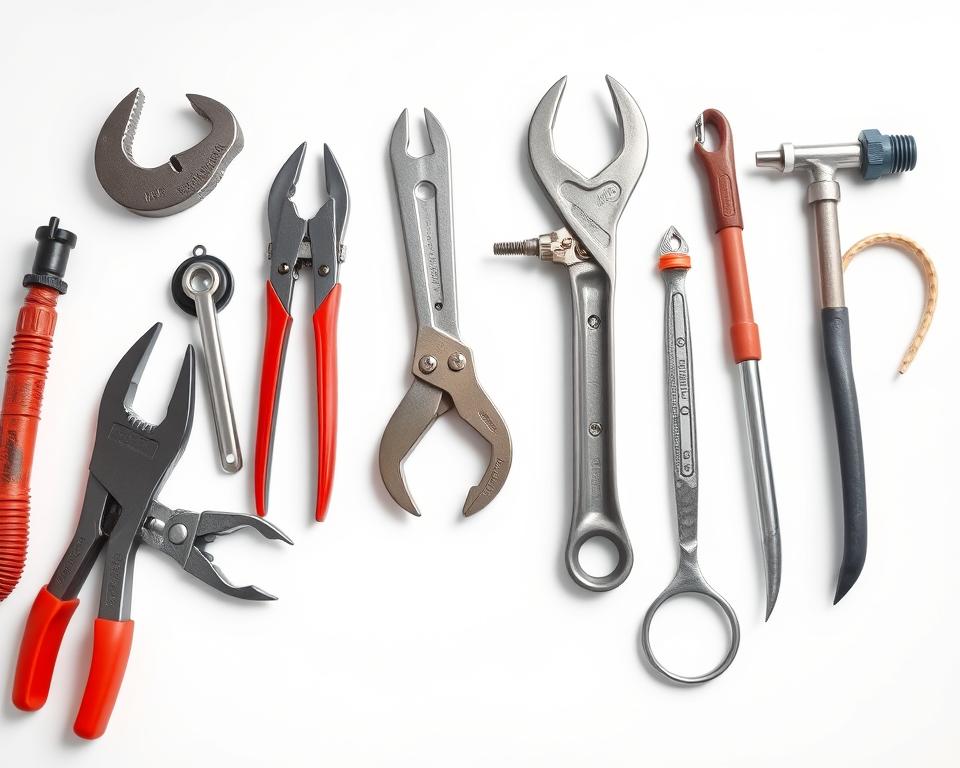Silicone Framework Adhesive Guide for Builders
Did you know that nearly 75% of construction experts rely on silicone structural sealants for efficient weatherproof construction? These high-performance adhesives are not just a fad; they have become indispensable in contemporary building ventures for their exceptional durability and resilience against weather elements.
Silicone structural adhesives provide strong adhesion and increased suitability with a wide range of substances. This makes them the preferred option for constructors concentrated on longevity and lower maintenance. Their effectiveness in multiple applications, particularly in framework connections and window sealing, shows how these building sealants have a crucial role in enhancing the performance and security of buildings.
Introduction to Silicone Framework Adhesives
Silicone framework adhesives are a crucial innovation in building and construction. They provide strong bonding and flexibility, making them important in contemporary architecture. In contrast to traditional adhesives, silicone adhesives boast enduring flexibility. This is crucial in areas susceptible to shifting or growth.
The development of framework window adhesives has been a revolutionary. These sealants are crucial for various applications, both inside and exterior structures. They ensure cohesion in diverse construction ventures. With a history extending years, silicone sealant are now essential for safety and aesthetics in building design.
Constructors and designers trust silicone sealants for their efficiency and versatility. They are used in glazing and sealing exterior connections, providing a reliable solution for contemporary building. As we delve into the categories and characteristics of silicone sealants, it’s clear they play a crucial role in construction methods.
Varieties of Silicone Adhesives
For constructors and contractors, it’s important to understand the different types of silicone adhesives. The primary categories are neutral silicone sealant and acid rubber adhesive. Each category has unique characteristics that affect their use, making it essential to choose the right one for a project.
Neutral Silicone Sealant
Neutral silicone sealant is the preferred for delicate uses. It doesn’t release solvents that could trigger corrosion or damaging chemical reactions with different materials. This makes it ideal for structural glazing, particularly in joining glass. Builders often choose this adhesive for working with metals and other sensitive materials.
Acid Silicone Sealant
Acid silicone sealant is ideal for projects with robust materials. It dries quickly, making it excellent for filling spaces promptly. It’s used in both residential and commercial environments where speed and durability matter. Contractors value its versatility, but caution is needed when applying it with substances that are sensitive to chemicals.
Important Attributes of Silicone Framework Sealant
Silicone framework adhesives shine in construction due to their notable features. They offer high bonding, strong weather resistance, and exceptional durability. These qualities are essential for constructors looking for a dependable sealant for multiple uses.
Adhesion and Compatibility
High-quality framework sealants adhere strongly to substrates like glass, alloys, and cement. This flexibility is vital for ventures needing a robust bond across various substrates. Builders value this adhesive for its capacity to guarantee a strong bond, improving the structure’s integrity.
Weatherproofing
Engineered to endure severe conditions, weatherproof silicone sealant resists to UV rays, moisture, and harsh weather. Such resilience guarantees it continues to work effectively over time. It’s an ideal option for ventures subjected to the elements or those in areas with fluctuating temperatures.
Longevity and Efficiency
One of silicone sealants’ key traits is their longevity. They are engineered to last, even with structural movement. This elasticity and longevity make them a top pick for projects requiring to adapt and endure, guaranteeing steady efficiency over their duration.
| Property | Description | Advantages |
|---|---|---|
| Bonding | Strong adhesive strength to multiple substrates | Guarantees building integrity and dependability |
| Weather Resistance | Defense from ultraviolet light, moisture, and temperature changes | Enhances durability and prevents seal failure |
| Durability | Ability to withstand building shifts | Provides a durable and efficient bond |
Applications for Silicone Adhesive in Building
Rubber sealants are crucial in building, particularly in framework window sealing uses. They join building components like glass panes, exteriors, and curtain walls, ensuring both durability and beauty. A top-quality rubber adhesive not only creates a robust bond but also flexes with building materials, preserving the bond through natural movements.
Rubber adhesives are also key in creating weather-resistant barriers, improving buildings’ resilience against severe conditions. This is essential for the longevity and safety of buildings. Here are some notable areas of application:
- Bonding different substances, such as glass to metal or concrete.
- Creating seals in curtain wall systems, improving energy efficiency.
- Providing waterproofing options for roofs and cladding uses.
- Facilitating growth and contraction in dynamic structures.
- Guaranteeing aesthetic appearance consistency in different building designs.
The distinctive blend of flexibility, durability, and weatherproofing makes top-quality rubber adhesives perfect for contemporary building needs. As constructors look for new options, rubber sealant is increasingly used, resulting in more secure and better construction practices.
| Use | Explanation | Advantages |
|---|---|---|
| Framework Window Sealing | Bonding glass panes to frameworks | Improved appearance, robust connection, elastic movement |
| Waterproofing | Protecting roofs and siding from moisture | Water resistance, improved durability, energy efficiency |
| Bonding Dissimilar Materials | Joining substances like alloys and glass | Flexibility in material compatibility, strong adhesion |
How to Select the Right Silicone Structural Sealant
Choosing the appropriate rubber framework adhesive demands a detailed analysis of substrate types and environmental conditions. It’s essential to comprehend how different materials react with different sealing agents. This understanding is crucial for choosing a top-quality rubber adhesive that can endure specific stresses.
Considerations for Various Substrates
When selecting rubber adhesive, different materials require unique methods. Below is a chart detailing typical substrates and their corresponding considerations:
| Material Type | Recommended Sealant Type | Key Considerations |
|---|---|---|
| Cement | Top-quality rubber adhesive | Adhesion properties and drying period |
| Panes | Non-reactive rubber adhesive | High transparency and UV resistance |
| Alloys | Rubber adhesive | Rust protection and elasticity |
| Timber | Hybrid silicone sealant | Moisture resistance and movement capability |
Application Environment Factors
The environment significantly affects the selection of adhesive. Factors such as temperature extremes, humidity levels, and chemical exposure are important. An perfect sealant should maintain efficiency across varying conditions.
- Heat Levels: Make sure the adhesive can withstand the specific temperature range.
- Moisture: Choose adhesives impervious to humidity for wet areas.
- Chemical Contact: If the area will be subjected to chemicals, select a adhesive with suitable resistance.
For the best results, consistently refer to manufacturer specifications and conduct suitability checks with materials. This method minimizes risk and ensures durability for all projects using a silicone structural sealant.
Proper Installation Techniques
Perfecting the art of sealant production application is crucial for its effectiveness. The result hinges on the completeness of surface preparation and the application methods used. These preliminary stages set the stage for a effective adhesive installation.
Surface Preparation
Surface preparation is the foundation of effective rubber framework adhesive application. It’s critical that materials are thoroughly cleaned, dried, and free of any impurities. The important procedures for substrate cleaning are:
- Washing: Dust, grease, and remnants must be removed. The choice of cleaner should match the material type.
- Priming: A base coat may be necessary, depending on the adhesive and material, to strengthen bonding.
- Dehydration: Complete dryness of the substrate is crucial before using the sealant, as moisture can weaken its efficiency.
Sealant Application Methods
Opting for the right sealant application methods is critical for excellent outcomes. The method employed should align with the venture’s needs and the desired result. Common methods include:
- Caulking Gun: This technique is favored for its accuracy in controlling sealant width.
- Trowel Application: Ideal for larger regions or when a substantial sealant layer is needed.
- Backer Rod Installation: Crucial in deeper joints, this method controls adhesive thickness and enhances adhesion.
Adherence to these application methods is vital to prevent bubble formation, which can detract from the seal’s integrity. Diligence in both substrate cleaning and application guarantees a seal that is both durable and efficient, supporting the long-term success of building endeavors.
Quality Assurance in Adhesive Application
Ensuring the standard of sealant usage is vital for meeting efficiency goals. Effective testing methods help builders and developers verify the cohesion of their work. This includes detailed bond strength verification under various conditions to determine if the sealant sticks effectively with the surfaces it contacts.
Bond Verification
Verifying bond strength is crucial for assessing silicone sealants. Techniques employed involve:
- Pull-off tests – a typical technique to measure the bond strength between the adhesive and the surface.
- Adhesion checks – useful for verifying how well the adhesive bonds over time.
- Real-world assessments – practical checks that ensure the adhesive works as expected in actual situations.
These methods, included in the quality assurance process, build confidence in the adhesive’s bonding capacity and its fit for a project.
Documentation and Warranty Considerations
Documentation is key in ensuring adhesive standard. It includes recording the materials utilized, how they were applied, and the conditions at the time of application. Thorough records aid in later upkeep and protect all parties. Guarantee factors are important, providing coverage against failures and defining the responsibilities of manufacturers and applicators. Sticking to standard documentation practices lowers risks from sealants that don’t meet standards.
| Record Kind | Explanation |
|---|---|
| Application Notes | Details on the installation method, including conditions and methods used. |
| Safety Information | Info on the safety and handling of adhesives employed in the project. |
| Warranty Documents | Conditions and conditions outlining coverage against defects and failures. |
Maintaining precise info throughout the procedure is crucial for adhesive standard. Efficient verification and careful documentation support strong guarantee factors, resulting in effective results.
Frequent Errors to Prevent with Rubber Adhesives
Many builders encounter issues with silicone sealants that can greatly affect their projects. It’s essential to address these errors for a lasting and efficient seal. Here are some typical errors to watch out for:
- Improper Surface Preparation: Failing to wash and readying surfaces properly can result in poor bonding. Always remove particles, oils, or contaminants before using the sealant.
- Selecting the Incorrect Adhesive: Various ventures require specific adhesives. Employing an reactive rubber in a place where a non-reactive adhesive is needed can result in subpar performance.
- Poor Application Techniques: Using adhesive inconsistently can form vulnerable areas. A consistent method and uniform application during application are essential for a solid seal.
- Overlooking Surrounding Factors: Sealants work best within specific heat and moisture conditions. Using them in severe situations can reduce their efficiency.
- Neglecting Curing Times: Rushing the drying process can lead in partial bonding. Always adhere to the recommended drying periods for the optimal outcome.
Recognizing and fixing these silicone sealant mistakes guarantees better efficiency and durability in construction projects. Taking these steps can result in effective installations and reduce the requirement for future repairs.
| Error | Effect | Solution |
|---|---|---|
| Improper Surface Preparation | Poor adhesion leading to seal failure | Thoroughly clean and ready substrates before use |
| Selecting the Incorrect Adhesive | Inadequate performance in particular situations | Choose a adhesive suitable with the use |
| Incorrect Adhesive Methods | Vulnerable areas in the bond, chance of breaks | Adopt steady and uniform application methods |
| Ignoring Environmental Conditions | Compromised seal integrity | Check heat and humidity before use |
| Neglecting Curing Times | Chance of early breaks | Follow the recommended drying periods |
Upkeep of Rubber Framework Adhesives
Guaranteeing the longevity and efficiency of silicone structural sealants is crucial. Regular upkeep can prevent mold growth, fading, and adhesive breakdown. This proactive method not only maintains the structure’s appearance but also prolongs the adhesive’s lifespan.
Key methods for efficient upkeep include:
- Routine Checks: Check for signs of wear, breaks, or swelling every few periods.
- Hygiene: Maintain the area around the adhesives tidy. Dirt build-up can cause fungus and discoloration.
- Reapplication: Timely new usage is crucial when adhesives show signs of deterioration to preserve integrity.
- Environmental Considerations: Consider of changing weather conditions and their impact on seal effectiveness.
Adopting these measures can greatly reduce potential problems, enhancing the structural integrity of structures using rubber products. This dedication to upkeep ensures a reliable and efficient adhesive for buildings.
Ecological Effects of Silicone Sealants
The environmental impact of sealants, especially silicone sealants, has seen a increase in attention. This heightened attention stems from the need to match building practices with sustainability. The manufacture of these sealants often includes volatile organic compounds (VOCs), which contaminate the atmosphere and impact indoor air quality.
As the construction sector moves towards sustainable materials, producers are innovating in rubber adhesives. They seek to lower VOC outputs and develop eco-friendly mixtures. These innovations not only cut down on carbon emissions but also align with eco-friendly building goals.
Waste management of rubber adhesives presents environmental hurdles. In contrast to some other options, silicone is hard to recycle, leading in more landfill waste. Consumers and builders should look for products labeled as eco-friendly or supported by reuse programs.
| Factor | Conventional Silicone Sealants | Eco-Friendly Rubber Adhesives |
|---|---|---|
| VOCs Emission | More pollutants | Lower emissions |
| Waste Management | Difficult to recycle | Designed for easier recycling |
| Formulation | Standard chemical components | Green ingredients |
| Adherence to Guidelines | Inconsistent | Meets green building standards |
Looking ahead, constructors and architects should prefer silicone sealants with lower environmental impacts. Choosing these sustainable choices can significantly lower damage to our environment. At the same time, they still offer the durability and performance needed in construction projects.
Contrasting Silicone Sealants to Other Sealants
Comprehending the variations between acidic sealant and other sealant types is essential for creating informed choices in building. This overview will concentrate on two primary contrasts: silicone vs. acrylic sealants and rubber vs. synthetic adhesives. Each has unique functions in bonding uses, influenced greatly by their attributes and applications.
Silicone vs. Acrylic Sealants
Rubber adhesives excel in flexibility and weather resistance, making them perfect for uses exposed to harsh environmental conditions. Plastic adhesives, while simpler to coat and usually reduced in cost, may not offer the same level of longevity over time. Important differences are:
- Weatherproofing: Silicone performs better in extreme temperatures and moisture.
- Elasticity: Silicone can expand and contract with building shifts, while acrylic is prone to breaking.
- Adhesion: Silicone adheres effectively to a variety of materials, whereas acrylic can be restricted.
Rubber vs. Synthetic Adhesives
In the contrast of silicone vs. polyurethane sealants, both provide great adhesion. Synthetic adhesives might possess a better connection to many substrates but often fall short when exposed to harsh weather. Important factors to note are:
- Adhesion Strength: Polyurethane can adhere extremely effectively on various materials.
- Weather Performance: Silicone is more likely to outperform polyurethane in intense environmental conditions.
- Use: Synthetic usually requires more precise blending and application than silicone.
Each type of sealant has its strengths and weaknesses, determining their suitability across different ventures. Making an informed choice depends on understanding these contrasts when choosing between silicone and alternative sealants.
Future Trends in Rubber Adhesive Innovation
The rubber adhesive industry is experiencing significant shifts, driven by the requirement for contemporary building solutions. Innovations in adhesive mixtures are improving longevity while lowering environmental impact. This change is propelled by increased understanding of eco-friendliness, leading the creation of efficient, green sealants.
Self-healing sealants are a revolutionary innovation in this area. These materials can automatically fix minor damages, greatly extending their life and reducing on replacements. This satisfies the growing need for long-lasting construction substances.
Builders encounter the difficulty of handling with weather changes. In response, producers are creating highly flexible rubber mixtures. These adhesives are designed to endure changing environmental factors without losing effectiveness. They are ideal for diverse building ventures.
The industry is also leaning towards eco-friendly, performance-focused adhesive options. Constructors and designers now seek products that satisfy their needs and promote eco-friendly practices. This shift underscores the important function of ongoing innovation in the sector.
- Auto-repair features
- Enhanced flexibility for weather changes
- Lower ecological effects
- Efficiency-focused mixtures
Summary and Final Thoughts on Rubber Framework Adhesive
Silicone structural sealants are crucial in the construction industry, offering numerous benefits that boost both functionality and durability. They provide superior adhesive properties and long-lasting seals, improving building longevity and strength against environmental challenges.
These adhesives also exhibit impressive weather resistance and versatility, making them suitable for a variety of applications. By employing high-quality silicone sealants, constructors not only promote eco-friendly methods but also guarantee their bonds last for years, ensuring safety and reliability.
As construction advances, the use of rubber adhesives will likely lead longer-lasting and energy-efficient options. Adopting these advancements will help builders deliver excellent results that satisfy modern construction needs while supporting green methods.



